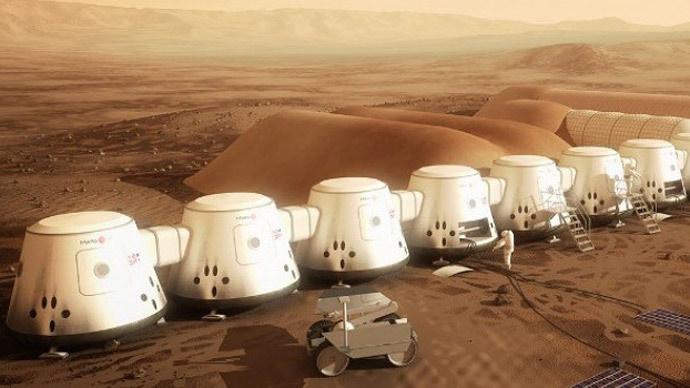The Mars One mission - to bring humans to the Red Planet - is underway, with nearly 80,000 applicants for a possible one-way trip. But will they go forth and multiply? Low gravity and cosmic rays lie in the path of the ambitious plan.
Mars is considered to be the most hospitable planet in the solar system, after Earth. The dreams of the ‘Martian Chronicles’ author, Ray Bradbury, or ‘Mr. Nobody’ director Jaco Van Dormael, could be turned into reality with the colonization project.
The mission is aimed at sending first four Mars inhabitants in 2024, and their journey will become a Dutch reality TV program. One of the things the first settlers will not be allowed to do, however, is to have children.

The reason is that “The human ability to conceive in reduced gravity is not known, neither is there enough research on whether a fetus can grow normally under these circumstances,” the mission states.
Still, Mars One acknowledges that to lead “true” life on Mars, having children is “vital,” so Adams and Eves could still descend on Mars. But what’s in store for them?

The planet’s gravity is just 38 percent of Earth’s, the atmosphere is so thin it resembles a laboratory vacuum, and is terribly cold. Typical nighttime temperatures close to the equator are -70 C.
Scientists have been examining the issue of reproduction in space for decades – in conditions of reduced gravity and limited space.
Although “performance of the sex act during a journey to Mars may require potentially complex sexual gymnastics,” American neuropsychologist Rhawn Joseph once noted, what concerns scientists more is the dangers and risks space conditions pose to a potential baby and his surviving abilities.

Researchers began their experiments with plants. Over 50 years ago, Soviet scientists sent peas into space – and its four generations turned out not to differ from their earthly breeds. Fruit flies followed, and in 1979 quail eggs.
Embryos developed normally, but problems arose when the chicks hatched - they didn’t even live four days, as they couldn’t cope with micro-gravity, somersaulting helplessly. Their instincts atrophied completely in 10 hours, not reacting to light and sound.
To explore effects on sexual behavior, Russian scientists sent male and female rats, as well as geckos, into space. In 1979, the rats refused to mate, and the 2014 gecko experiment returned dead lizards.
However, human beings are considered likely to easily overcome sex-related psychological problems.
Officially, NASA has no policy regarding sex in space. Nevertheless, astronauts voluntarily abide by the ‘Astronaut Code of Professional Responsibility’, which calls“for a constant commitment to honorable behavior.”
But even if those hurdles are overcome, biological factors come into play. High levels of radiation, both from the sun and from outer space, damage the ovaries and testicles – the most sensitive parts of body to the cosmic rays.
Studies in non-human primates during the second half of pregnancy revealed that even low doses of ionizing radiation are enough to harm the ovaries of a female fetus. Should humans be exposed, a girl carried to term in interplanetary space could be infertile.
Bad luck for this solar system?
“I believe that we will eventually establish self-sustaining colonies on Mars and other bodies in the solar system, but not within the next 100 years,” believes British physicist Stephen Hawking.

